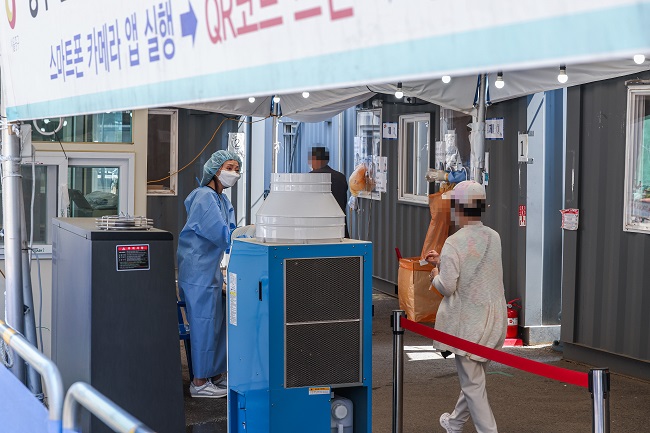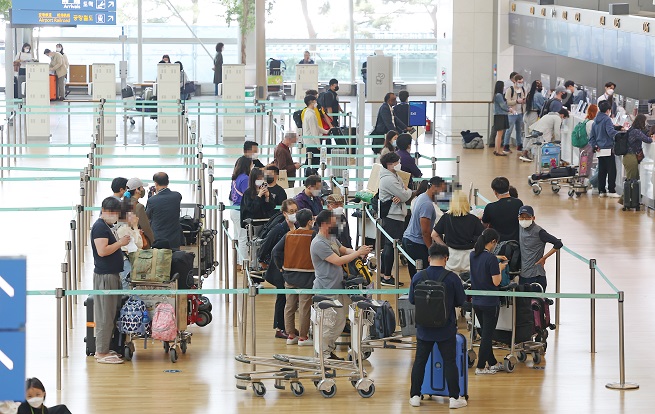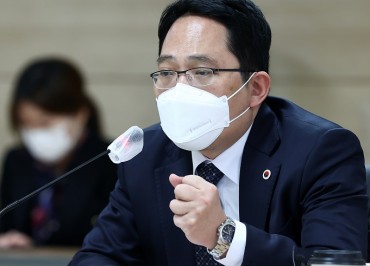
A medical worker guides a visitor at a COVID-19 testing booth near Seoul Station in central Seoul on May 16, 2022. (Yonhap)
SEOUL, May 16 (Korea Bizwire) — South Korea’s new COVID-19 cases fell to their lowest tally in nearly four months Monday amid a slowing virus trend giving a boost to efforts for a return to normalcy.
The country reported 13,296 new COVID-19 infections, including 28 from overseas, bringing the total caseload to 17,795,357, the Korea Disease Control and Prevention Agency (KDCA) said.
Monday’s count is the lowest since the 13,005 reported on Jan. 26.
The omicron wave spread rapidly across the nation early this year, peaking at more than 620,000 on March 17, before marking a steady decline to the current level.
The public health agency reported 35 COVID-19 deaths, raising the total to 23,744. The fatality rate stood at 0.13 percent.
The number of critically ill patients reached 345, up from the previous day’s 338.
As of 9 p.m. on Monday, the country had reported 33,948 new infections, up 21,031 from the same time a day earlier, according to local governments and health authorities. Daly cases are counted until midnight and announced the following morning.
The government is expected to decide later this week whether to further relax COVID-19-related restrictions, particularly the seven-day mandatory quarantine requirement for confirmed patients.
“We’re analyzing the quarantine indicators and situation regarding the preparations for the medical system,” the central virus response team said. “We are going to start the discussions within the government in earnest.”

Travelers line up to check in for boarding at Terminal 1 of Incheon International Airport, west of Seoul, on May 13, 2022. (Yonhap)
Officials had set a four-week interim period to give time for preparations before shifting medical and other relevant procedures under a post-pandemic scheme, when they downgraded the infectious disease level for COVID-19 late last month.
The interim period ends this Friday.
South Korea began to allow Pfizer’s Paxlovid oral COVID-19 pill prescriptions for children age 12 and under with underlying diseases, including diabetes and cardiovascular, renal and respiratory illnesses.
MSD’s Lagevrio is allowed for those age 18 and over with underlying diseases.
The oral treatments had only been prescribed to elderly patients aged 60 and over, people aged 40 and over with underlying illnesses and those with weak immune systems.
As of midnight Sunday, 44.56 million, or 86.8 percent of the population, had completed the full two-dose vaccinations, and 33.22 million, representing 64.7 percent, had received their first booster shots.
A total of 3.46 million people had gotten their second booster shots, the KDCA said.
(Yonhap)






